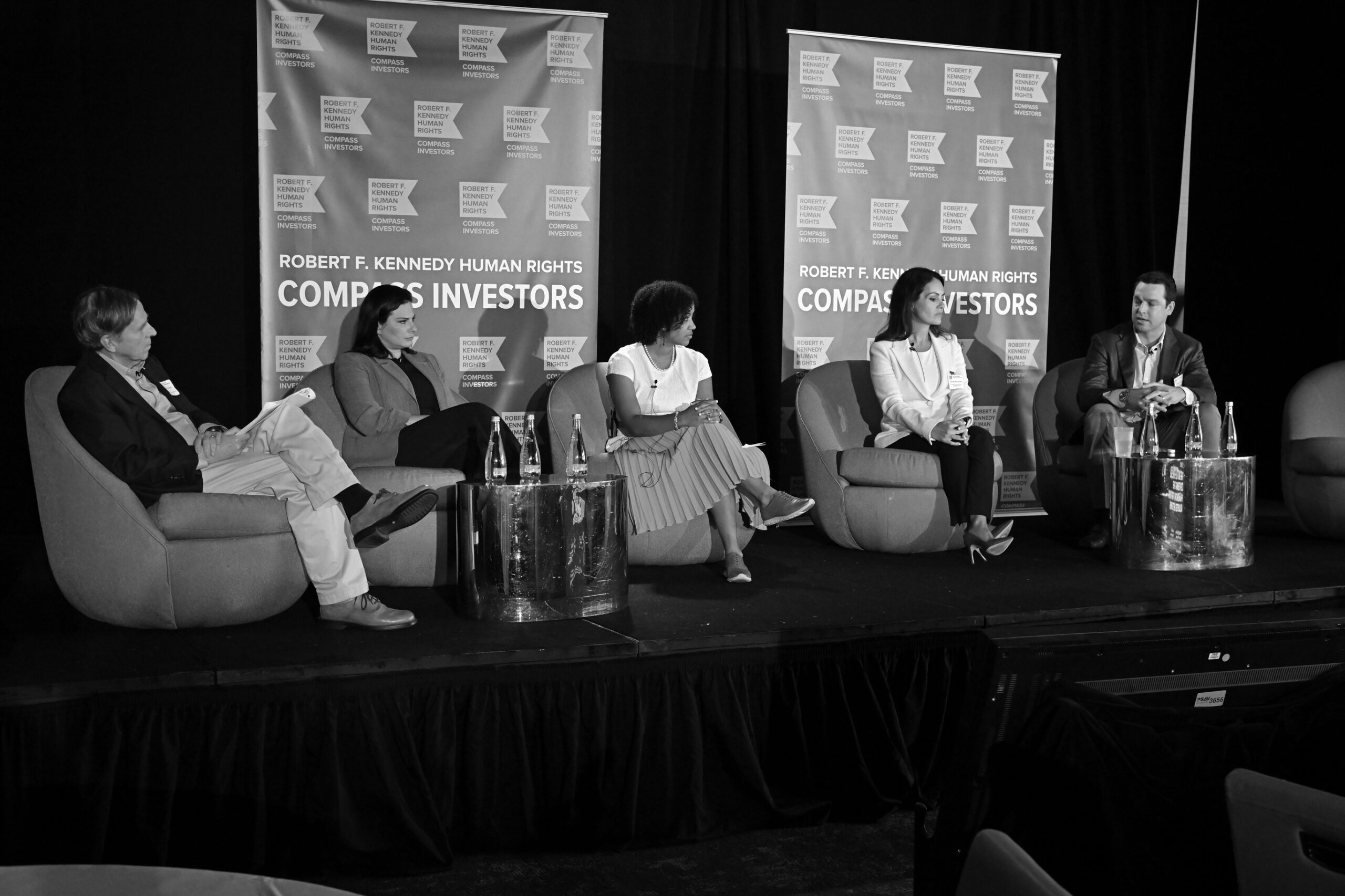United States
-
Union Leadership and the Civil Rights Movement
Tags Share On April 4, 1968, Martin Luther King Jr. stayed at the Lorraine Hotel in Memphis, Tennessee. While standing on the balcony, King was shot by James Earl Ray and was pronounced dead that night. Martin Luther King Jr.’s death rang across the county as we had lost one of the most outstanding civil…
-
Human Rights Organizations Urge United Nations to Review Abusive Solitary Confinement Practices in California, New York, Louisiana, and Minnesota
Tags Share Washington, D.C., February 28, 2023 – Last week, a group of human rights organizations including Robert F. Kennedy Human Rights, the California Mandela Campaign, Atlas of Blackness, Unlock the Box Campaign, and the NY #HALTsolitary campaign, filed a joint submission urging the United Nations to review abusive solitary confinement practices against Black people…
-
Compass Winter Investors Conference attendees strategize about disrupting the status quo, inclusive investments

Tags Share Monday’s Compass Winter Investors Conference brought 130 attendees to Miami to learn concrete strategies about staying the course on inclusive investments and disrupting the status quo so the business world reflects a more just and equitable vision. Noting that it took nearly three years to hold the annual winter conference in person, Robert…
-
US tortures Black people with solitary confinement: report to UN International Independent Expert Mechanism to Advance Racial Justice and Equality in the Context of Law Enforcement
The United States wields solitary confinement against Afro-descendent people in municipal jails, state and federal prisons, immigration detention centers, and care settings for foster youth, causing devastating mental, physical, and emotional harm.
-
New York tortures people with solitary confinement: letter to the NY Department of Corrections and Community Supervision
In February 2023, RFK Human Rights wrote a letter to the DOCCS, highlighting the ways in which current regulations violate HALT, and provided recommendations to cure these violations.
-
Kerry Kennedy and Dick Durbin: Hold Russia accountable for the crime of aggression in Ukraine
Tags Share A full year has passed since Russia launched its war against Ukraine in February 2022. Let us repeat that: a full year. As the rest of the world aged and grew, grappled with technological advances, inflation, record-breaking drought, flooding and political shifts, residents of Ukraine have been unable to escape the single, all-encompassing…
-
Once again we are asking for change. When will there be progress on police brutality?
Tags Share Our message is clear: It’s time to limit police contact with the public and decrease the opportunities law enforcement has to introduce violence to non-violent situations. This means limiting police power to stop people on mere pretext, repealing laws that criminalize people who speak out against police abuses, and investing directly into communities…
-
‘Guerrilla Habeas’ brings inside look at team of lawyers determined to beat deportation cases
Tags Share “Once people are swept up in the detention system, they are essentially disappeared, and people do not see them.” A new documentary, ‘Guerrilla Habeas’, follows our very own Sarah Gillman as she fights to restore human rights and dignity of immigrant communities in the United States. Speaking with MSNBC about the upcoming film,…
-
Paul Pierrilus, Who Was Unjustly Deported to Haiti Two Years Ago Today, Must Be Returned to the United States and Reunited with His Family
Tags Share Washington DC, February 2, 2023 – Two years ago today, on Feb. 2, 2021, the Biden-Harris administration put Paul Pierrilus, a finance consultant from New York, on a deportation flight to Haiti. Born in St. Martin to Haitian parents but raised in New York, Paul was not from and had never been to…
-
How to keep ESG moving ahead in the face of political madness

Tags Share By Sancia Dalley and Kerry Kennedy Imagine a money manager trying to sell you on their ability to invest your retirement savings. After a long pitch, you say, “ When you invest in a company, do you see first if it has a history of environmental damage? Do you check to see if…
-
5 Things to Know About the Brown v. Board of Education Case

Tags Share RFKHumanRights · #RFKHRVoiceArticles | 5 Things to Know About the Brown v. Board of Education Case In the fall of 1950, Oliver Brown, a Black church minister, tried to enroll his daughter Linda at Sumner Elementary School, a few blocks from their home in Topeka, Kansas. But she was denied enrollment because it…
-
A human rights defender helps the next generation find their voices

Tags Share New Orleans educator Stephen Bradberry instills human rights values in his students every day with a proactive approach. Bradberry teaches at New Harmony High School in New Orleans, Louisiana. It was established five years ago and educates 250-300 students with a focus on coastal restoration and preservation – creating a sustainable Louisiana through…


Share